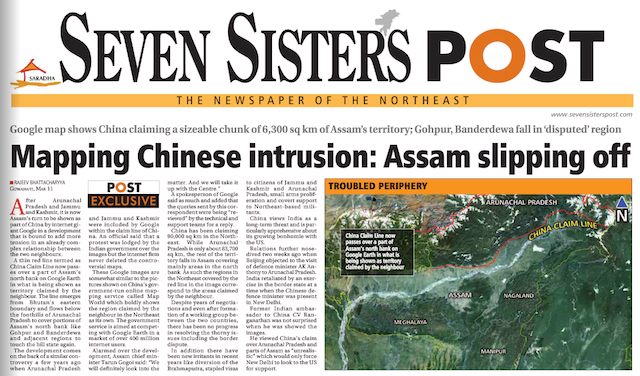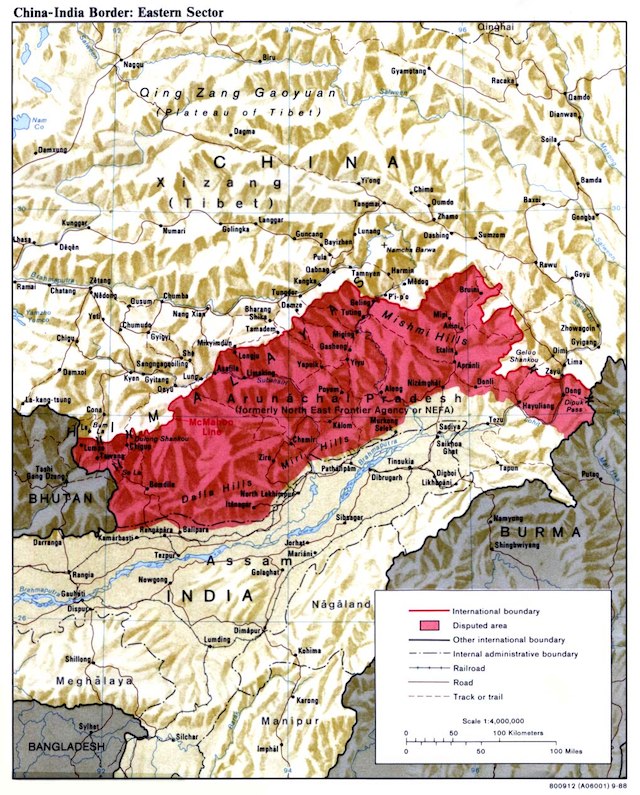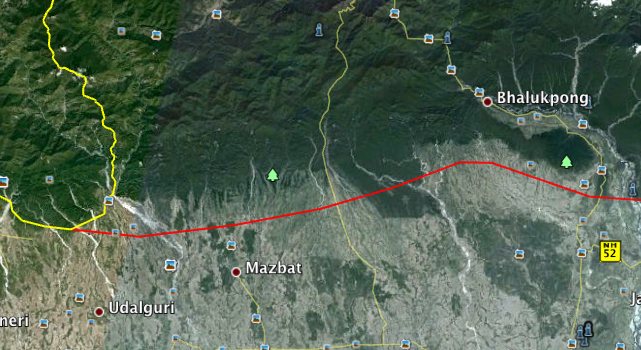When this Oregon’s Salem News article crossed my radar screen, I felt it was a sufficiently over-the-top case of conspiracy mongering so that it did not merit a retort beyond a line of snark on Twitter.
Is Google Earth Hiding Sri Lanka’s Ghosts?
Tim King Salem-News.com
Google, are we misreading this? Haven’t Sri Lanka’s Tamils been through enough?
(SALEM) – Does Sri Lanka’s ongoing lack of transparency over its recent Genocide of Tamil people extend to Google Earth?
It’s disturbing. Google Earth appears to be be using an unusual series of photographs to comprise its image of Sri Lanka as the regime stands accused of war crimes in Geneva.
It’s a question that deserves to be asked; why is the exact area where so many were killed by government forces hard to make out, and why is that image specifically from 2005, years before the intense attacks on civilians in this area, while adjacent images are from May 2009, in the middle of the worst of the ethnic cleansing?
The number one online resource that people turn to for research should refuse censorship to any government that stands accused of grave violations of international laws regulating war, and crimes against humanity.
Etc. It goes on like that for many more paragraphs.
But then I noticed that others in my Twitter stream, people who generally know better, did not treat this story with the contempt it deserves:
Is Google Earth Hiding Sri Lanka’s Ghosts? flpbd.it/gokfW a bit on the conspiratorial side but raises important issues
— Evgeny Morozov (@evgenymorozov) March 18, 2012
So suddenly the narrative becomes: Why hasn’t Google posted satellite imagery of the endgame of the civil war in Sri Lanka on Google Earth — specifically from May 2009, when civilian refugee camps were bombarded by government troops. Is it callous negligence, or is Google somehow shielding Sri Lanka’s government from bad PR?
It shouldn’t come as a surprise that satellite imagery is available in Google Earth, and has been in one way or another since June 2009.
It was first available as a downloadable overlay within weeks of the events, created by Amnesty International and the American Association for the Advancement of Science (AAAS). (I know because I was involved in the production of one component of it — the aerial imagery popups.)
AAAS had asked the satellite imagery provider DigitalGlobe to take these images within the framework of their Scientific Responsibility, Human Rights and Law Program, which puts scientific resources to use to uncover and publicize human rights abuses, specifically through the use of satellite imagery. (The program has also highlighted abuses in Zimbabwe and Darfur.)
Then, sometime between 2009 and now, these DigitalGlobe images automatically became part of the Google Earth base layer — because Google’s contract with DigitalGlobe stipulates that all imagery take by its satellites ends up in Google Earth. (There are exceptions: Iraq and Afghanistan are not being updated due to the ongoing security situation there. Imagery of Israel and the Occupied Territories is reduced in resolution, as per US law. Overcast imagery is also rejected.)
So how does Salem News’s Tim King get to pen an article in such accusatory tones? If we rule out malicious intent, the only other explanation is ignorance of how Google Earth works, coupled to a conspiratorial mindset that prejudices Google.
The imagery that Tim King thought lacking is in fact part of the historical imagery dataset in Google Earth, and can be accessed by clicking the historical imagery button in the top button bar of the application. If he were to do this over the specific area where he complains the imagery is from 2005 (view in Google Earth here), he’d see imagery from May 27 2011, January 23, 2010, September 8 2009, and June 15, 2009, in addition to 2006 and 2005. In the areas immediately to the north, he’d find imagery from May 24, 2009.
Google doesn’t alway show the most recent imagery in the default layer; sometimes there is more recent imagery available in the historical layer. This is because the default layer is meant to be a reference layer, so older imagery that is clearer will sometimes trump more recent imagery containing clouds, long shadows or snow. The satellite- and aerial imagery used by Google Earth carries metadata such as cloud cover percentages, image resolution and acquisition date, and the resulting image mosaic uses this information to construct the “best” default snapshot of Earth.
When time-sensitive satellite imagery is taken in the immediate aftermath of humanitarian crises such as the Haiti quake or Hurricane Katrina, imagery is often cloudy, because the weather does not always cooperate and cloudy imagery is better than nothing. Google will include such imagery in its dataset, but it tends not to remain in the default view for long. In any case, the default dataset is reconstructed every time Google Earth has an imagery update — these days every two weeks or so — and newer imagery tends to crowd out older.
There is one final question to address: What if Google Earth had not had this data? Would Tim King’s complaint have been justified? Is it Google’s responsibility to commission satellite imagery itself every time it suspects some humanitarian disaster is in the offing? Google promotes the work of advocacy groups in support of human rights, as evinced by the Global Awareness layers available in the sidebar of Google Earth, and it also collaborates with DigitalGlobe and GeoEye in specific cases where getting time-sensitive satellite imagery to first responders via Google Earth will help the rescue. But Google should not be in the business of vetting every cause — that is the job at which the likes of Amnesty International and Human Rights Watch excel. Much better is for Google to focus on building an ever more accurate geospatial platform for the work of of such groups. And finally: Whenever a monitoring group commissions imagery from DigitalGlobe (such as what ISIS does when it monitors Iran’s nuclear program) that imagery ends up in Google Earth automatically, over time. Any cause can play, for a few thousand dollars.
Google Earth is a powerful transparency engine — so it is best to read the manual before penning embarrassing conspiracy theories that at best are a waste of the reader’s time, and at worst succeed in subverting initiatives that Google actually deserves praise for.




